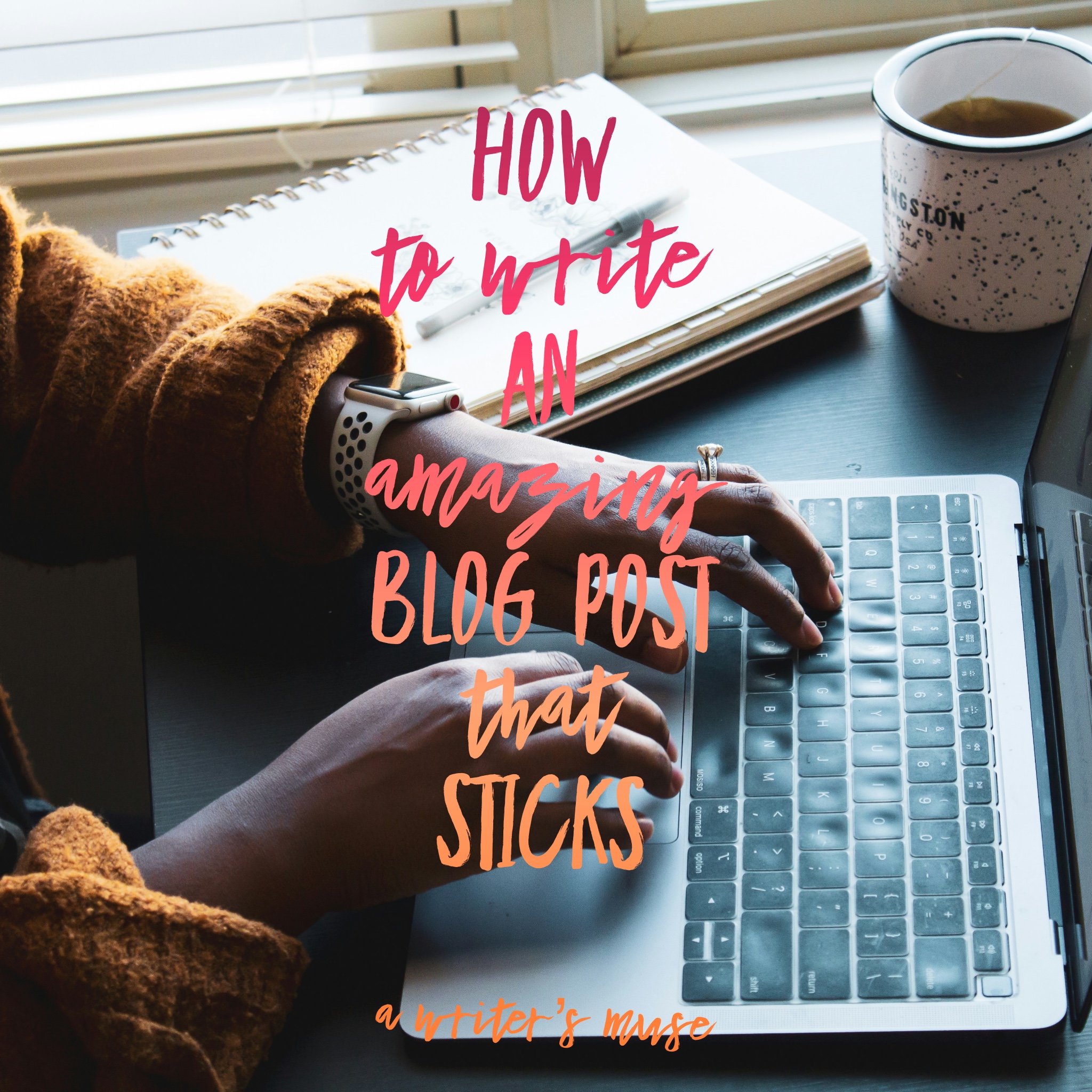Writing a blog post is simpler than you think. If you wrote an essay in high school, then you are well on your way. Sure the structure of a blog post reads a bit different than your high school English teacher’s essay topic, but it should be organized.
While there remain times that a blog post should be more open-ended and reflective, sticking to a basic structure helps hold your reader’s attention.
If I write to you about the history of how A Charlie Brown Christmas went on air for the first time, and I digress to the other Christmas cartoons on the television, I lost you. In other words, sticking to a topic and delivering with structure keeps your reader’s reading.
So, let’s break down the structure you need to follow in a blog post before you enter the realm of creativity.
How do you write a blog post?
First things are first. When you write your first blog post and hit enter, you think, “Well, that was easy.”
Later, you return to your blog only to discover that you have a list of grammatical and syntax errors. In frustration, you click edit and make sure that the Grammarly thing is turned on.
The beauty of writing on a blog is that when you struggle to get your expressions on the page, you come back later and edit them. But, it would be nice if we really did not have to return to constantly re-editing, wouldn’t it?
So, how do you write a blog post? You begin with high school English and start with the foundations.
First, you begin with a topic and keyword that supports the main theme of your blog. Secondly, you lead your reader step by step through your how-to, a list, or other ideas. Third, you edit and proofread your work. Then, finally, you add in your photos.
You craft your post to include high-quality writing so that your blog post provides something of value to your readers. Writing a blog post includes solid structure, but it also includes a well-written storyline within the framework of the rest of your blog.
Each post must fit into the over-arching ideas on your blog itself.
Choose a Topic That Fits Your Blog
Let’s begin with choosing a topic. In all seriousness, your blog topic generally drives your blog’s purpose, and your blog posts must reflect that topic.
Even when writing on Medium, sticking to a topic ensures that your Medium blog has a specific genre to it. You may have two or three topics you write about, but when you stay on that topic path, your readers know what to expect.
Think of your blog as an umbrella. The general topic of your blog is the main idea or umbrella. Then, each post you write must be under that umbrella and not contradict your topic.
If you write about a topic that doesn’t really fit under the main topic, it gets left out in the rain so to say.
For example, if your blog is all about Bitcoin, then writing about world travel may not exactly fit under that umbrella.
Better blog post topics might include but not be limited to subjects like Bitcoin faucets, ways to earn Bitcoin or the best Bitcoin wallets to buy. You might have something more specific related to each one of those topics that you can write about.
It might be about anything, but simply make sure your topic fits the genre of your blog. The blog post is a small building block in the whole building of a blog.
As you can see, writing on the topic really helps.
Create your catchy title
Don’t forget to catch your reader’s attention with a catchy title. If you just write a blah, blah title, it may get a few hits on Pinterest, but not many will visit it in the long run. I really like the plugin in Monsters, because it allows me to get a title score for my blog post. The higher the score, the more relevant it is to the search engines.
Choose a title that gives readers a reason with a giant arrow to come read your post. Make it relevant to your post and promise lots of content. Plus, it goes without saying that whatever your topic or keyword is, it must be in the title itself.
So, writing a topic that matches your content and photos helps build a blog and a work-from-home business.
Tell a story
If you really want to grab a reader’s attention, telling a story that fits your topic keeps your readers on your blog.
While even though you may not be a prolific story teller, it helps to share content in a story with a point.
Add in a keyword
This takes some people time to figure out. But, adding in a keyword about your blog post topic helps you keep your blog organized and helps the search engines find your blog.
Once you add in that keyword, ask Google what other variations of the keyword there are. Then, see if you can add the keyword phrases and /or combinations into your blog post.
While this may not seem important if you have little to no traffic at first, later the feelers your blog post puts out will come back to help your blog traffic.
For example in our toy blog example above, if you are writing about baby toys, but specifically teether toys, you need a keyword that fits such a post. You could include the keywords, teether or teether toys. This helps the search engines to find your post.
So, yes, these keywords are a must when you write your blog.
Use the hamburger method
While I have seen criticisms about the hamburger method or sandwich method of writing, the premise is intended to give your writing order.
Once you achieve a solid writing structure for your blog posts, your creativity will only enhance your writing. Creativity is intended to grab a reader’s attention so that they continue to read instead of clicking away.
In the hamburger method, we use the imagery of building a burger through our sentences and paragraphs.
In this structure, the buns are the introduction and the conclusion. Then, the supporting details in the blog post are what we identify as lettuce, tomato, cheese, and meat.
Each item we add to our burger contains additional details that only support the rest of the article we write. Once you write the introduction and details, you add in the final conclusion or the bottom bun.
For example, in your first bun, the introduction, may introduce me to the topic of riding a train across the country. You might entice me with the idea of traveling this way, and how much fun it would be.
Once you set this foundation in order, you add in each layer of your burger. For each stop along the way, you add in and describe the lettuce, tomato, cheese, and meat patty. As the writer, you list the stops along the way you will describe, such as Boston, New York City, and Albuquerque.
You describe each layer in complete detail so that I am left with a specific impression every step of the way. Plus, because I follow your train of thought, I want to read where I should go when I travel for myself.
Each layer may be one to even three paragraphs or more while you write explicit details about each stop along the railway.
Finally, you add in the last layer of the burger, the conclusion. You summarize what you wrote about and gush on and on about the amazing trip you had. Wrap up your post and then begin the process of editing and proofing.
You need to carry out this line of thinking in all of your blog posts as well. Only instead of five paragraphs, you will need to write at least five sections with bold headings. Scroll back through this post and note the main topic of this post and what my supporting details are.
This is the hamburger framework of a blog post.
Edit Your Work
I think we all dread this. Writing a blog post really can be fun, especially if you love to write. Or, if you are completely impassioned about your topic, your passion and interest shine through.
But, the editing and proofing part cannot be skipped if you really want to produce high-quality writing people want to come back to.
As I stated above, using a browser writing tool like Grammarly really helps identify errors you make while you write. Grammarly highlights your errors and helps you edit them appropriately.
Sometimes, the errors are simply because you make a typographical error. Other times, you forget the syntax or grammar rules while your thoughts fly out onto the screen.
Either way, checking for grammar and even the flow of your ideas and the structure of your blog post help create good writing for others to read.
Once you craft your main blog post idea on the screen, you need to let it sit for a bit, and then come back to it. Allowing yourself the freedom to walk away and then come back to the post with a fresh set of eyes.
This allows you to hone in your main idea and truly craft a story that others want to read. Using fiction writing skills to add descriptions, tell stories or add in quotes, helps readers understand your point and stay engaged in your writing.
Once you find your work meets the test of few to no errors, you move on to the photos.
Add in photos
The truth is that there are several websites that contain free images for writers and other creatives to use, but that does not mean they are unique. Some photographers sell their work to several different websites in order to make a living.
Thus, use the scroll to go further into the search to find an image that fits your blog post and highlights what you wrote about, works best. Especially if you use the Unsplash feature on Medium.
However, there are also other websites that offer images for free which you can use as well and upload. Websites such as Pixabay or Pexels allow you to use free photos as well.
You might also have a subscription to Canva which allows you to use similar images and add in text. Whichever one you choose is fine. Just don’t skip adding in a photo.
There are plenty of options to choose from.
You need to either add your keyword and title on top of the photo, or on a canvas along with your photo.
Your Blog Post Must Fit With The Blog
Finally, writing solid blog posts builds a solid blog or publication. Not everyone reads to be entertained. Many people read for information and instruction.
Writing a blog post that contains helpful information for your readers might contain some level of creativity. But, sticking to structure first and staying through the course of driving home a point wins.
Creating good content on the Internet helps all of us learn and grow as readers and writers.
When you write your blog, it must fit in the niche of your topic and then support the main topic you blog about. Otherwise, you have a blog with plenty of posts that do not support the blog.
One blog post fits into a sea of other blog posts to create a blog. Hence, when you write, you build with the building blocks of multiple posts. Writing each one well, or at least to the best of your ability helps you build the blog that you desire to achieve.
Need more help learning how to build a work-at-home business?
Try these ideas to help you build a solid foundation.


1 thought on “How to Write A Blog Post That Sticks”